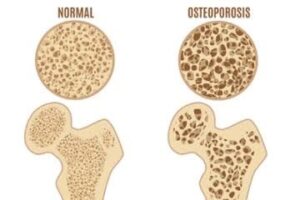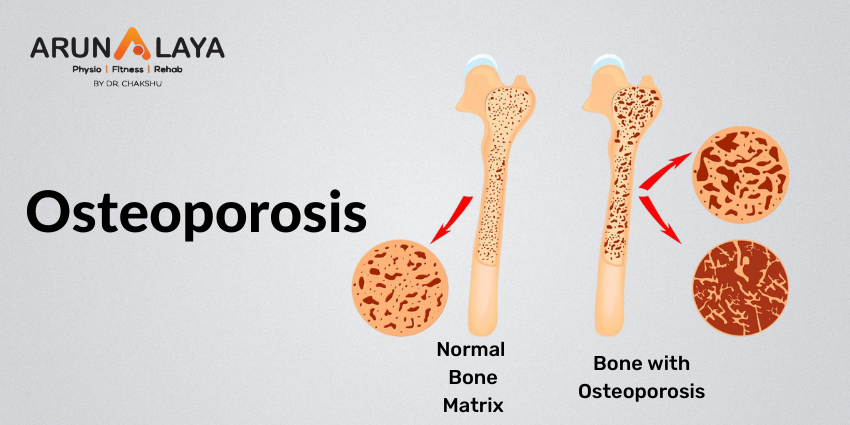OSTEOPOROSIS MANAGEMENT IN PHYSIOTHERAPY
Osteoporosis is a condition in which the bones in the body become weak and brittle as a result of tissue loss over time. This illness is most common in the elderly, but it can also occur in middle-aged patients.
Although this condition can affect any bone in the body, it most commonly affects the following:
- Spine
- Hips
- Waist
Because of bone fragility, people with osteoporosis are susceptible to fractures.

Causes
While weak bone structures are caused by ageing factors, smoking, and excessive alcohol use, a prolonged sedentary lifestyle can also play a role. Cigarettes contain toxic substances that interfere with the bones’ natural ability to repair, while alcohol interferes with calcium absorption.
Habitual physical inactivity promotes the activity of osteoclasts (the cells responsible for bone resorption).

Another factor that contributes to osteoporosis is hormonal change associated with ageing. Women going through menopause may be more likely to develop osteoporosis later in life due to lower oestrogen levels (a hormone that helps manufacture bone mass).
Anyone can get osteoporosis, and the risk rises with age.
Role of Physiotherapy
Physiotherapy can aid in the prevention and management of osteoporosis.
Over the course of weeks and months, a physical therapist will design a personalised training programme to strengthen your bones and muscles.
This improves your balance and reduces your chances of falling.
Physical therapy can also aid in the recovery from an osteoporosis-related accident.

Physical therapy often involves performing stretches or exercises, usually done in repetition or sets. But physical therapists also use a variety of other techniques to improve movement.
These include:
- Manual therapy
- Kinesiology taping
- Dry needling
- suggestions for lifestyle changes
- MFR
- heat or cold therapy
- ultrasound / electrical stimulation
- Stability training
Benefits of PT
- Physiotherapy treatments aid in the strengthening of bones and muscles
- Regular and targeted exercise is essential for the prevention and management of osteoporosis.
- Working with a physiotherapist can help you with the following:
- improve your balance
- lower your chances of falling
- stretch and strengthen your muscles
- correct stooped posture
- prevent further bone loss
- reduce pain

